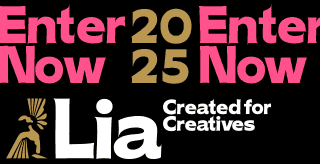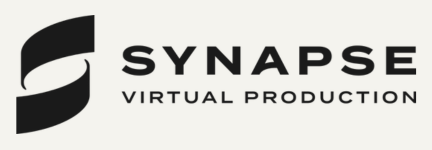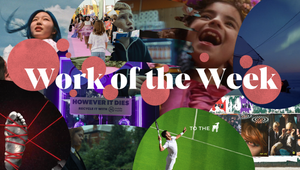
How Big Is Too Big? Indie Leaders on Scale vs. Soul

Photo by KNXRT on Unsplash.
Back in the ‘80s, ‘How big can we get before we get bad?’ was the question asked by the late advertising legend Jay Chiat. Decades later, independents are still asking the same question. As indies rack up clients and headcount, there’s a nagging fear that scaling up might mean selling out, or at least losing the scrappy, creative mojo that made them special in the first place.
To explore this tension, we asked a host of independent leaders where they draw the line between growth and goodness. It seems there may be no magic number, only an unending battle to align with the core identity.
As Norm Hagarty, CEO of indie network DAC, puts it, “The moment you dilute what made you great in the first place… that’s when you’ve grown too big.”
Bigger’s Only Better if…
It’s a perspective mirrored across the board and globe. BarkleyOKRP’s CEO Katy Hornaday stresses that growth in and of itself isn’t evil; “size isn’t the enemy” – complacency is. Katy says the question isn't about how big you get but how well you grow, and that expansion should serve a purpose that goes beyond ego. The point of getting bigger, she says, is to give clients more creative firepower and solve larger problems, not to chase revenue for revenue’s sake. Bigger’s only better if it makes the work so.
One word leaders keep returning to is ‘culture’. Peter Figge, CEO of Jung von Matt, says the challenge is matching an agency’s entrepreneurial spirit with the creative values that defined its youth. He argues this demands structural choices, like sharing ownership and empowering what he calls “co-entrepreneurs” within the agency, so that growth amplifies rather than waters down ethos.
Others reach for metaphors to illustrate their point. “Think of the way a narrative can swell with characters and subplots until it loses the tautness that made it compelling,” says Gordian Gleiß, founder of 86Tales. He warns against adding “chapters” that don’t enrich the story. For Gordian, indies must never “surrender the soul for the sake of the surroundings”.
Many argue that if you want to maintain that beating heart, the intangible soul stuff, you need look no further than your people. Christine Olivas, founder and CEO of No Single Individual, says that while there’s no inherent wrong in scale, the problem lies in doing so “at the cost of the humans who make an agency great.”
Christine says that, historically, growth and big wins have been chased with little regard for burnout or diversity, but many of today’s wave of indies reject this as a false trade-off. Great work doesn’t happen in a pressure cooker of exhausted, disillusioned teams.
And there’s much to be said for the kind of positive impact that can be made if things are done right. As H/L celebrates 40 years in business, director of brand strategy David Morrisey reflects on what worked. A few years ago, after a period of rapid growth, they hadn’t looked critically at evolving their own brand; they knew if they weren’t thoughtful about “clearly expressing what we valued most, we risked having it shaped for us.” They prioritised optimism and empathy, and proactively bet on emerging capabilities. “If we ceased making those bets, well, Chiat might say we’d gotten big enough to be bad,” says David.
Kaïs Ali Benali, CEO at gaming specialist Biborg, credits flexibility and a tight-knit team for keeping his shop both fast and relevant, saying, “Our biggest competitive advantage remains the people in our team – not how many there are, but who they are.”
Founder of LA-based agency Party Land, Haley Hunter, similarly believes independence is about mindset over size. “There’s no correlation between size and independence. For us, the real question is, “At what point will you stop being able to serve your people and your clients the way you should? That’s when things go bad.”
“You’re not just a number here,” she tells both staff and clients – and as long as that holds true, bigness and goodness can coexist.
Indie Agencies and Agency
Independence in its purest form, after all, means the freedom to choose your own path, and that includes growth. Dan Appleby, managing director at Drummond Central, explains that being indie gives you an all-important licence to say no, whether that is declining a misaligned pitch or refusing to cut corners to hit quarterly numbers. He cautions that losing your way can happen at any size. When standards slip or are compromised, that’s when the risk of being bad is heightened. “And that can happen whether you’re big, small, or somewhere in between.”
Party Land MD Andy Silva agrees, saying badness rears its head “when you make a decision that runs counter to why your agency exists.” When indies start out, their clarity of purpose attracts talent and like-minded clients. Trouble brews when you abandon the North Star and start chasing, as Andy describes it, “the royal dollar”.
So if size, per se, isn’t the culprit, what about actual size benchmarks? Some leaders admit that beyond a certain point, human nature and logistics do kick in. Alex Best, founder and CEO of Wonderhood, suggests that around 100-150 people might be an upper cultural limit for many agencies – not coincidentally, roughly the number of relationships the average person can maintain (a concept known as Dunbar’s number).
Beyond that, “culture starts to fray unless you’ve built the right structure,” says Alex. Indie networks like Wieden+Kennedy, Mother and Serviceplan spring to mind as examples. He advises agencies to codify their values and empower other leaders to take real ownership long before reaching that threshold.
He also points out the warning signs of an overexerted agency – rising stress, longer hours, diminished creativity, and decision-making gridlock because every call bottlenecks at a few senior people. If you notice that “the bold ideas that once made you special” are becoming casualties of bureaucracy, it could be a red flag.
“Family Doesn’t Scale”
Jon Goulding, CEO at Atomic, has lived through this evolution from the inside. He started at a 13-person indie that felt “like a family”, where “no one needed permission to make things better”. But as the agency grew, things changed for the worse.
The cracks began to show at 60 people, and by 100, the indie spirit had all but templated itself. The culture broke, not with a bang but with a “slow, sad drift” into sameness. For Jon, the tipping point is around 60-80. “That's where you start fighting for culture instead of riding it.”
While he’s quick to add that big doesn’t automatically equal bad, his experience says, “Family doesn’t scale.” He adds, “Independence doesn’t survive homogeneity. At some point, the indie soul becomes just another company.”
Scaling Without Losing Soul
So, can an indie agency ever grow indefinitely and stay good? Yes, most of our contributors claim, but only by growing smartly. Kate Howe, executive director at MSQ believes it's entirely possible. “Indies don’t get ‘bad’ because they grow – they get into trouble when they forget what makes them good in the first place… In this sense, scale isn’t the enemy; it’s sameness.”
Many interviewees bring us back to that core idea of intentional structuring. Simon Hewitt, founder of Orange Panther, says his team has a set target of stopping at around the 30 full-time staff mark (for now) to ensure they maintain the strategic rigour baked into their DNA. By capping growth, or at least slowing it, they aim to preserve the hands-on involvement of leadership and the tight culture clients expect.
Other indies are exploring more flexible scaling, like bringing in trusted freelancers or specialist partners rather than adding bodies in-house, or embracing tech to increase output without bloating the org chart.
Jon from Atomic, a self-confessed ‘AI-optimist’, says many tasks that once required armies of ‘doers’ can now be automated or streamlined. Smarter processes might let indies punch above their weight, growing impact and revenue, without the proportional explosion in staff and hierarchy.
So What Does It All Mean?
It seems “too big to stay good” is an idea less about numbers and more of a warning sign. It arrives precisely when an agency starts betraying itself, whether that be through diluted culture, unhappy people, subpar work, or decisions driven by fear and greed rather than creativity and conviction.
The good news is that every leader I spoke to believes those pitfalls can be avoided through conscious effort. Growth can fuel better teams rather than smother them. If growth is on your terms.
The indie ethos that sparked success in the first place need not vanish at scale, if you protect it fiercely and build systems to support it.
As Gordian reminds us, “The real magic of an indie isn’t its size; it’s the ability to keep telling the stories that matter and to keep inviting others into the narrative without ever losing its own voice.”
Just don’t forget why you’re growing in the first place.















